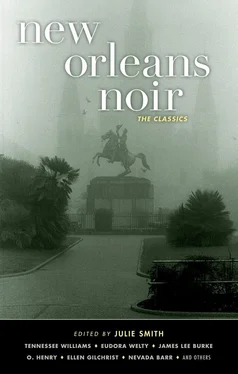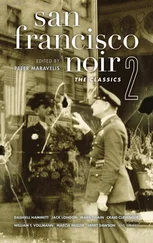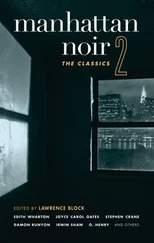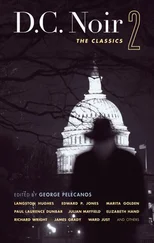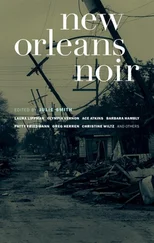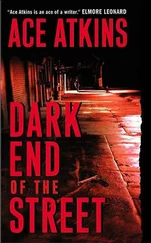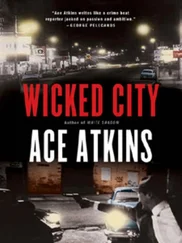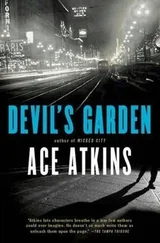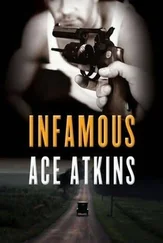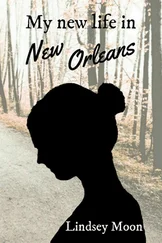Ace Atkins - New Orleans Noir - The Classics
Здесь есть возможность читать онлайн «Ace Atkins - New Orleans Noir - The Classics» весь текст электронной книги совершенно бесплатно (целиком полную версию без сокращений). В некоторых случаях можно слушать аудио, скачать через торрент в формате fb2 и присутствует краткое содержание. Город: New York, Год выпуска: 2016, ISBN: 2016, Издательство: Akashic Books, Жанр: Детектив, на английском языке. Описание произведения, (предисловие) а так же отзывы посетителей доступны на портале библиотеки ЛибКат.
- Название:New Orleans Noir: The Classics
- Автор:
- Издательство:Akashic Books
- Жанр:
- Год:2016
- Город:New York
- ISBN:978-1-61775-384-8
- Рейтинг книги:3 / 5. Голосов: 1
-
Избранное:Добавить в избранное
- Отзывы:
-
Ваша оценка:
- 60
- 1
- 2
- 3
- 4
- 5
New Orleans Noir: The Classics: краткое содержание, описание и аннотация
Предлагаем к чтению аннотацию, описание, краткое содержание или предисловие (зависит от того, что написал сам автор книги «New Orleans Noir: The Classics»). Если вы не нашли необходимую информацию о книге — напишите в комментариях, мы постараемся отыскать её.
takes a literary tour through some of the darkest writing in New Orleans history.
New Orleans Noir: The Classics — читать онлайн бесплатно полную книгу (весь текст) целиком
Ниже представлен текст книги, разбитый по страницам. Система сохранения места последней прочитанной страницы, позволяет с удобством читать онлайн бесплатно книгу «New Orleans Noir: The Classics», без необходимости каждый раз заново искать на чём Вы остановились. Поставьте закладку, и сможете в любой момент перейти на страницу, на которой закончили чтение.
Интервал:
Закладка:
Joseph Maggio awoke to the sound of his wife choking on her own blood. Great hot spurts of it bathed his face. A tall figure stood by the bed, instrument of death in his upraised hand. Maggio recognized it as the axe from his own backyard woodpile, gleaming with fresh gore. It fell again with a sound like a cleaver going into a beef neckbone, and his wife was silent.
Maggio struggled to sit up as the killer circled to his side of the bed. He did not recognize the man. For a moment their eyes locked, and Maggio thought, That man is already dead .
“Cagliostro?” It was a raspy whisper, possibly German-accented, though the man looked Italian.
Wildly, Maggio shook his head. “No, no sir, my name’s Joseph Maggio, I just run a little grocery and I never heard of no Cagli-whoever... oh Jesus-Mary-and-Joseph, please don’t hit me with that thing—”
The blade glittered in a deadly arc. Maggio sprawled halfway off the bed, blinded by a sudden wash of his own blood. The axe fell again and he heard his own skull crunching, felt blade squeak against bone as the killer wrenched it out. Another searing cut, then another, until a merciful blow severed his jugular and he died in a red haze.
It was found that the killer had gained access to the Maggios’ home by chiseling out a panel in the back door. The chisel had belonged to Joseph Maggio, as had the axe, which was found in a pool of blood on the steps. People all over New Orleans searched their yards for axes and chisels, and locked away these potential implements of Hell.
A strange phrase was found chalked on the pavement a block from the Maggios’ house: Mrs. Maggio is going to sit up tonight, just like Mrs. Tony. Its significance has not been discovered to this day.
Maggio’s two brothers were arrested on the grounds that the Maggios were Sicilians, and Sicilians were prone to die in family vendettas. They were released by virtue of public drunkenness — they had been out celebrating the younger one’s draft notice on the night of the murders, and had staggered home scarcely able to move, let alone lift an axe.
The detective in charge of the case was shot to death by a burglar one week after the murders. The investigation languished. News of the Romanov family’s murder by Bolsheviks in Russia eclipsed the Maggio tragedy. The temperature climbed as June wore on.
“I detect Cagliostro’s influences still at work on this plane,” the Archduke said. “We must move on to the next candidate.”
Deep inside his own ectoplasm-snared brain, which the wraith kept docile with wine except when he needed to use the body, D’Antonio could only manage a feeble moan of protest.
A clear tropical dawn broke over New Orleans as John Zanca parked his wagon of fresh breads and cakes in front of Luigi Donatello’s grocery. He could not tell whether the grocer and his wife were awake yet, so he decided to take their order around to the back door. He gathered up a fragrant armful of baked goods still warm from the oven and carried them down the narrow alley that led to the Donatellos’ living quarters.
When he saw the back door with its lower left panel neatly chiseled out, his arms went limp. Cakes and loaves rained on the grass at his feet.
After a moment, Zanca stepped forward — careful not to crush any of the baked goods — and knocked softly on the door. He did not want to do so, but there seemed nothing else to do. When it swung open, he nearly screamed.
Before him stood Luigi Donatello, his face crusted with blood, his hair and mustache matted with it. Zanca could see three big gashes in his skull, white edges of bone, wet gray tissue swelling through the cracks. How could the man still be standing?
“My God,” moaned Donatello. “My God.”
Behind him, Zanca saw Mrs. Donatello sprawled on the floor. The top of her head was a gory porridge. The slender stem of her neck was nearly cleaved in two.
“My God. My God. My God.”
John Zanca closed his eyes and said a silent prayer for the Donatellos’ souls and his own.
The newspapers competed with one another for the wildest theory regarding the Axeman, as the killer came to be known. He was a Mafia executioner, and the victims were fugitives from outlaw justice in Sicily. He was a vigilante patriot, and the victims were German spies masquerading as Italian grocers. He was an evil spirit. He was a voodoo priest. He was a woman. He was a policeman.
The Italian families of New Orleans, particularly those in the grocery business, barricaded their doors and fed their dogs raw meat to make them bloodthirsty. These precautions did not stop them from lying awake in the small hours, clutching a rosary or perhaps a revolver, listening for the scrape of the Axeman’s chisel.
In high summer, when the city stank of oyster shells and ancient sewers, the killer returned. Two teenage sisters, Mary and Pauline Romano, saw their uncle butchered in his own bed. They could only describe the man as “dark, tall, wearing a dark suit and a black slouch hat.”
Italian families with enemies began finding axes and chisels dropped in their yards, more like cruel taunts than actual threats. Some accused their enemies. Some accused other members of their families. Some said the families had brought it upon themselves. Tempers flared in the sodden August heat, and many killings were done with weapons other than axes. Men with shotguns sat guard over their sleeping families, nodding off, jerking awake at the slightest noise. A grocer shot his own dog; another nearly shot his own wife.
The city simmered in its own prejudice and terror, a piquant gumbo.
But the Axeman would not strike again that year.
D’Antonio came awake with a sensation like rising through cool water into sunlight. He tried to move his hands: they moved. He tried to open his eyes: the ceiling appeared, cracked and water-stained. Was it possible? Was the fucking monster really gone ?
“Duke?” he whispered aloud into the empty room. His lips were dry, wine-parched. “Hey, Duke? You in there?”
To his own ears he sounded plaintive, as if he missed the parasitic murdering creature. But the silence in his head confirmed it. The wraith was gone.
He stared at his hands, remembering everything he had seen them do. How ordinary they looked, how incapable of swinging a sharp blade and destroying a man’s brain, a woman’s brain. For a long time he sat on the edge of the bed studying the beds of his nails and the creases in his palms, vaguely surprised that they were not caked with blood.
Eventually he looked down at himself and found that he was wearing only a filthy pair of trousers. He stripped them off, sponged himself to a semblance of cleanliness with the stale water in the basin, slicked his hair back, and dressed in fresh clothes. He left his apartment without locking the door and set off in a random direction.
D’Antonio wandered hatless in the August sun for an hour or more. When he arrived at the States newspaper office, his face was streaming with sweat, red as a boiled crawfish. He introduced himself to the editor as a retired police detective, an expert on both Italians and murderers, and gave the following statement:
“The Axeman is a modern Doctor Jekyll and Mr. Hyde. A criminal of this type may be a respectable, law-abiding citizen when he is his normal self. Compelled by an impulse to kill, he must obey this urge. Like Jack the Ripper, this sadist may go on with his periodic outbreaks until his death. For months, even for years, he may be normal, then go on another rampage. It is a mistake to blame the Mafia. The Mafia never attacks women as this murderer has done.”
He left the States office with several people staring bemusedly after him, but they printed the interview in its entirety.
Читать дальшеИнтервал:
Закладка:
Похожие книги на «New Orleans Noir: The Classics»
Представляем Вашему вниманию похожие книги на «New Orleans Noir: The Classics» списком для выбора. Мы отобрали схожую по названию и смыслу литературу в надежде предоставить читателям больше вариантов отыскать новые, интересные, ещё непрочитанные произведения.
Обсуждение, отзывы о книге «New Orleans Noir: The Classics» и просто собственные мнения читателей. Оставьте ваши комментарии, напишите, что Вы думаете о произведении, его смысле или главных героях. Укажите что конкретно понравилось, а что нет, и почему Вы так считаете.
